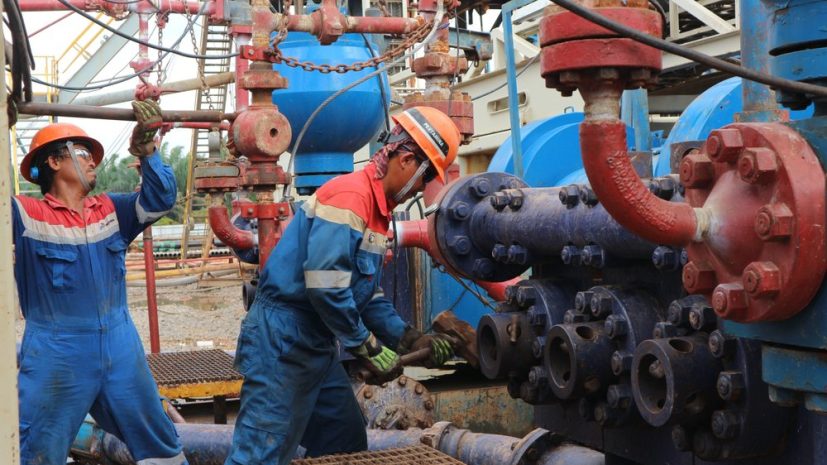Well Integrity and Safety: Best Practices in Well Interventions

Posted: December 6, 2023
Well interventions are carried out during or at the end of a well’s productive life to improve or restore oil and gas productivity. Various procedures and techniques are used to enhance well performance, increase production rates, and ensure well integrity during this process.
Well integrity is fundamental to maintaining consistent and continuous control of fluids within a well and prevent unintended movement or loss of fluid containment to the surrounding environment. Policies define commitments and obligations to guard against health, safety, and environmental risks—as well as asset and reputational loss.
In this guide, we’ll explore well integrity and safety best practices. As leaders in the flow control sector, we look at how effective flow control solutions can encourage a systematic approach to optimizing well success and safety.
Raising the Bar for Well Integrity and Safety
As production fields display signs of aging—such as high water cut and flow assurance issues—exploration and production (E&P) operators are increasingly dedicated to well integrity management (WIM). But with stricter WIM regulations, a diminishing workforce, and cost control challenges, operators need to strategically assess how they can streamline all well life cycle phases.
With 60 years of flow control expertise across many energy sectors, Gilmore continues to advance our offerings, so they exceed industry standards. To raise the bar in the oil and gas sector, legacy valve designs were upgraded to the Gilmore GEN2 series to meet or exceed the five-year maintenance industry requirements set by BSEE. Most of these significantly enhanced valves exceed API 16D requirements because they have undergone extreme qualification testing with multiple valves a minimum of two times that of industry standard at maximum flow conditions.
The improvements and testing not only help our customers remain compliant, but also maintain operational best practices for improved safety and reduced costs with product performance assurance.
Best Practices for Achieving Success and Safety in Well Interventions
To maintain well integrity and reduce risks throughout the life cycle of a well, well interventions demand a combination of technical, operational, and organizational solutions. The below best practices support a multidisciplinary approach to optimize the safety and efficiency of well interventions.
1. Pre-Intervention Planning
Pre-intervention planning requires outlining the specific steps, procedures, and timelines for the intervention. This includes:
- Clearly establishing the objective and scope of the intervention
- Assessing potential risks and hazards associated with the planned intervention
- Collecting and analyzing relevant data and information regarding the wells production performance, geological characteristics, and reservoir conditions
- Involving relevant stakeholders—including drilling personnel, engineers, geoscientists, and operations personnel—in the planning process
- Evaluating wellbore and reservoir conditions, including well depth, pressure, temperature, fluid properties, and production history
- Choosing the most appropriate equipment, tools, and services
- Reviewing all relevant regulations, permits, and environmental standards
- Developing monitoring and contingency plans for unexpected events or challenges
Operators should compile a comprehensive written plan that details all aspects of the pre-intervention planning process. This documentation serves as a reference for the execution team and provides a record of the decision-making process. Pre-intervention planning minimizes risks, optimizes resources, and achieves desired outcomes effectively.
2. Personnel Training and Qualifications
With tight labor markets, companies are finding themselves counting on contract and temporary workers with little or no experience in E&P activities. This exacerbates the need for ongoing comprehensive training measures for skill development and safety awareness.
Development programs and training equip workers with the knowledge, skills, and competencies to navigate new advancements and challenges in the industry. Employees can better adapt to and leverage new technologies—ensuring a workforce that remains competitive.
Effective development strategies include:
- Conducting a thorough needs assessment to identify skill gaps
- Implementing blended learning approaches such as classroom sessions, e-learning, simulations, and on-the-job training to cater to different learning styles and ensure maximum knowledge retention
- Competency-based training to develop skills required for specific job roles
- Establishing mentoring and coaching programs that foster knowledge transfer and experiential learning
A well-trained workforce is a strategic asset that contributes to the success and sustainability of oil and gas operational excellence.

3. Wellbore Integrity Assessment
Risk tolerance and rank category definitions can vary by well type, company, and location. Each company should create its own specific definitions for well risk based on operating area, well stock, and its own risk capacity. Wellbore integrity risk assessment methods may include:
- Quantitative Risk Assessments based on numerical probability using historical data and reliability models (commonly used for oil pipeline systems and hydrocarbon processing facilities)
- Qualitative Risk Assessments based on industry experience and good engineering judgment
- Hybrid Methods—due to a lack of reliable quantitative data, many well integrity assessments follow a hybrid model based on a combination of known failure data, rules, procedures, and risk matrices
Wellbore integrity assessment protocols should include:
- Regular routine inspections of the wellbore and its components to identify any signs of degradation, corrosion, leaks, or structural issues
- Implementation of appropriate monitoring systems to track wellbore conditions
- Periodic pressure testing to assess the integrity of the wellbore and its barriers
- Casing annulus pressure tests or surface casing pressure tests to evaluate the effectiveness of cement and casing barriers
- Well logging tools—such as cement bond logs or electromagnetic corrosion logs—to assess the integrity of the cement and casing
- Development, implementation, and documentation of standard operating procedures and maintenance schedules
Gilmore’s QHSE Department is staffed with a talented group of individuals that cover quality control, quality assurance, internal and supplier quality processes. Gilmore has achieved and maintained certification to API Q1, ISO 9001, ISO 14001, and ISO 45001.
Gilmore quality processes range from evaluating & reevaluating suppliers, incoming supplier inspections, in-process machine shop inspections, and final inspections for both machined components and assembled assemblies leaving the Gilmore facility. This ensures products are correct for desired performance.
4. Equipment and Technology
Advanced technology is vital in enhancing the effectiveness and efficiency of well interventions. Cutting-edge equipment and technology contribute to well interventions in the following ways:
- Advanced sensors, downhole cameras, and logging tools provide real-time data to identify issues and make informed decisions during intervention planning
- Advanced analytics and AI algorithms can analyze large volumes of well data to identify patterns, predict potential issues, and optimize intervention strategies
- New technologies allow for remote monitoring of well parameters, such as pressure, temperature, and flow rates, from a centralized location; remote control capabilities similarly enable adjustments or interventions without physical presence at the well site, improving efficiency and reducing costs
- Coiled tubing and tractor systems allow for precise wellbore interventions—such as perforation, acidizing, or tool deployment—without the need for full workover operations
- Progressive valve technology like Gilmore’s delivers debris tolerance, component longevity, and reliability; improved component composition and design extend service life and decrease downtime—reducing operational costs while improving productivity
Through versatile and adaptable design engineering, Gilmore’s production solutions and unconventional solutions are suitable for existing or new system designs.
5. Documentation and Reporting
Effective document management is necessary for oil and gas companies to facilitate:
- Regulatory compliance, especially during audits or inspections
- Safety and risk management, as proper storage and organization of safety manuals, standard operating procedures, and emergency response plans enable easy access to critical information in emergencies
- Knowledge preservation, including technical specifications, engineering drawings, geological data, and best practices
- Efficient communication and coordination among project teams and stakeholders
- Operational efficiency and decision-making, especially in time-sensitive operations, such as drilling, production, or equipment maintenance
- Business continuity by safeguarding critical records and documents, protecting them from loss, damage, or unauthorized access
Advanced Flow Control Solutions Support Optimized Well Interventions
System reliability, qualification testing, and advanced maintenance strategies are important to optimizing well interventions and ensuring capital efficiencies. With over half a century of flow control expertise, Gilmore provides essential flow control solutions for interventions, completions, and plug and abandonment systems. We pride ourselves on industry-leading seal reliability and durability, despite harsh conditions and contaminated fluid exposure.
At Gilmore, we welcome the opportunity to partner with you in new product developments, customizing flow control solutions to your unique specifications. From design through to successful deployment, we have the agility to undertake the entire process with full compliance. In addition, we offer spare kits, training, and an aftermarket maintenance and repair service to support product performance through the entire lifecycle.
Looking for advanced, reliable flow control solutions? Let’s chat.




